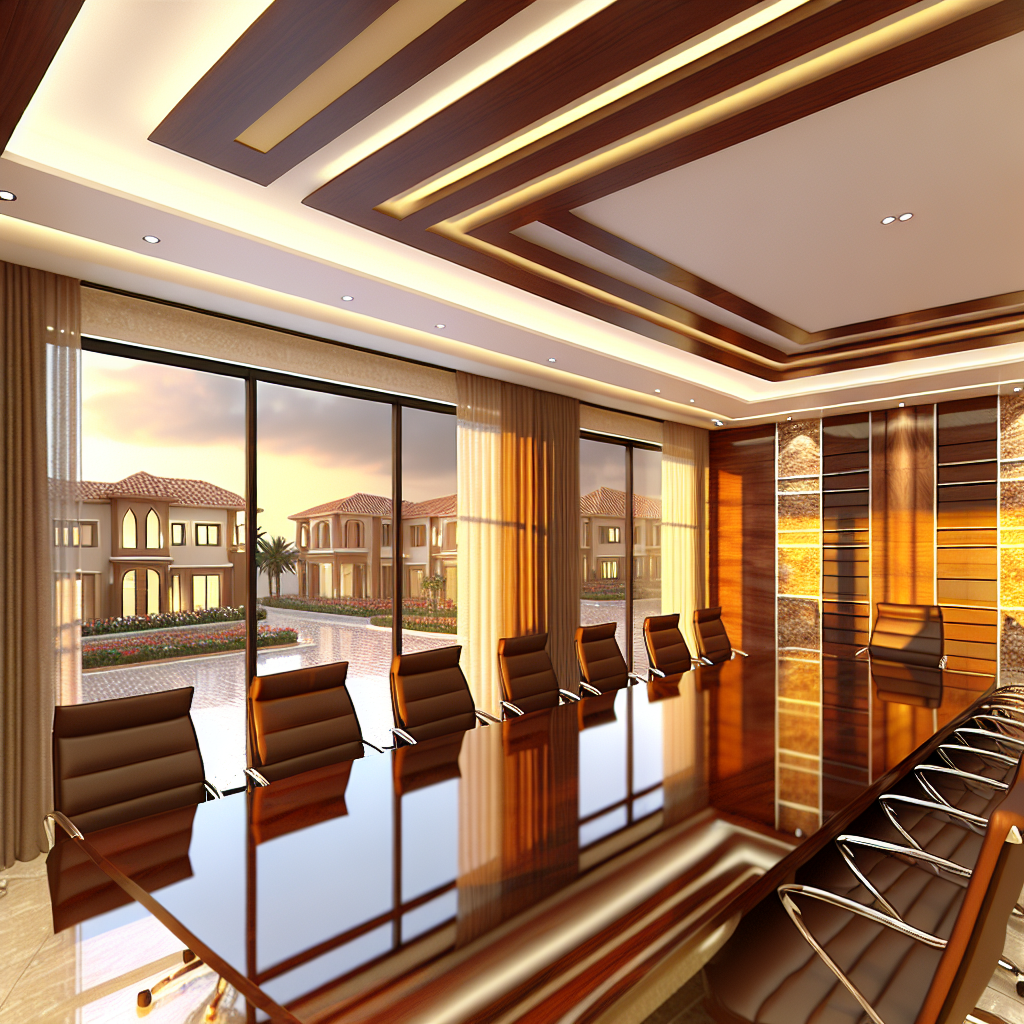July 26, 2025 by 100XBuilds Team
Succession Planning for Luxury Builders: Exit Strategy Guide

A $47 million luxury home builder in Scottsdale recently discovered their company was worth 40% less than expected when they began exploring exit options. The culprit? Years of focusing solely on revenue growth while neglecting the systematic value-building strategies that sophisticated buyers demand. This scenario plays out repeatedly across the luxury construction industry, where talented builders create stunning homes but struggle to build equally impressive business valuations.
For luxury custom home builders generating $10M+ annually, succession planning isn't just about eventual retirement—it's about architecting a legacy that maximizes value whether you're planning a strategic sale, family transition, or management buyout. The builders who command premium valuations understand that exit strategy begins the moment you decide to build something bigger than yourself.
The Hidden Value Gap in Luxury Construction
Most successful builders dramatically underestimate the complexity of creating a truly valuable, transferable business. While your craftsmanship and client relationships drive current success, buyers and successors evaluate entirely different metrics when determining value.
Consider the stark reality: luxury construction companies typically sell for 0.8x to 1.5x annual revenue, while systematically managed building enterprises command 2x to 3x revenue multiples. The difference lies in how transferable your business model truly is.
The Four Pillars of Transferable Value
Systems-Dependent Operations: Buyers pay premiums for businesses that function independently of the founder's daily involvement. This means documented processes for everything from initial client consultation to final walkthrough, standardized project management protocols, and quality control systems that ensure consistent outcomes regardless of who's managing the project.
Predictable Revenue Streams: A $12 million builder in Austin increased their valuation by 60% by transitioning from project-based revenue to a model incorporating design-build retainers, maintenance contracts, and strategic partnerships with luxury developers. Recurring revenue elements, even small ones, dramatically improve valuation multiples.
Institutional Client Relationships: While personal relationships matter, businesses with institutional client acquisition systems—referral programs, strategic partnerships, and brand-driven lead generation—demonstrate sustainability beyond the founder's network.
Financial Transparency and Sophistication: Advanced financial reporting, detailed project profitability analysis, and sophisticated cash flow management signal to buyers that they're acquiring a mature business operation, not just a talented craftsperson's client list.
Strategic Value Building: The 10-Year Approach
Successful succession planning for luxury builders requires a decade-long commitment to systematic value creation. This isn't about preparing for sale in year nine—it's about building enterprise value from day one of your succession timeline.
Years 1-3: Foundation Building
The initial phase focuses on creating the operational infrastructure that sophisticated buyers expect. This includes implementing comprehensive project management systems, establishing detailed financial reporting protocols, and beginning the transition from founder-dependent operations to systems-driven execution.
A Colorado-based luxury builder generating $15 million annually began this process by investing $200,000 in operational systems and hiring a dedicated operations manager. Within three years, their gross margins improved from 18% to 24% while reducing their personal involvement in daily operations by 60%.
Key Initiatives:
- Implement enterprise-level project management software with full financial integration
- Establish detailed job costing and profitability analysis for every project
- Create standardized processes for client communication, change orders, and quality control
- Begin building management depth with key hires in operations and business development
Years 4-6: Market Position Strengthening
The middle phase concentrates on building market dominance and reducing competitive vulnerability. This involves strategic positioning, brand development, and creating barriers to entry that protect your market share.

Strategic Market Positioning: Successful luxury builders don't compete on price—they dominate specific market segments. Whether it's contemporary mountain homes, historic renovations, or sustainable luxury construction, clear positioning creates premium pricing power and reduces competitive pressure.
Brand Asset Development: Your brand becomes a transferable asset when it generates leads independently of your personal reputation. This requires consistent marketing investment, thought leadership development, and systematic client experience management that creates word-of-mouth referrals.
Strategic Partnerships: Developing exclusive relationships with luxury architects, interior designers, and specialty contractors creates competitive moats while generating consistent project flow. These partnerships become valuable assets in any succession scenario.
Years 7-10: Value Optimization and Transition Preparation
The final phase focuses on maximizing valuation and preparing for transition, whether to family members, key employees, or external buyers. This involves financial optimization, management transition, and strategic positioning for maximum value realization.
Management Succession Development: Identifying and developing internal successors requires years of systematic preparation. A successful transition might involve gradually transferring client relationships, project oversight responsibilities, and strategic decision-making to proven team members.
Financial Performance Optimization: The three years preceding any exit strategy should demonstrate consistent growth, improving margins, and sophisticated financial management. This often involves strategic investments in technology, key personnel, or market expansion that demonstrate growth trajectory to potential buyers.
Family Succession: Building Generational Wealth
Family succession in luxury construction presents unique opportunities and challenges. Unlike financial services or manufacturing, construction businesses require specific technical knowledge, relationship management skills, and operational expertise that can't be easily transferred.
Preparing the Next Generation
Successful family transitions begin with honest assessment of next-generation capabilities and interests. Not every builder's child has the passion or aptitude for luxury construction, and forcing succession rarely creates positive outcomes for the business or family relationships.
A third-generation luxury builder in Charleston created a five-year development program for his daughter, including formal construction management education, rotations through every department, external mentorship with non-competing builders, and gradual responsibility increases tied to specific performance metrics.
Structured Development Programs: Formal development programs should include external education, cross-functional experience within the business, mentorship relationships outside the family, and clear performance benchmarks that demonstrate readiness for increased responsibility.
Gradual Responsibility Transfer: Successful family transitions typically span 3-5 years, with systematic transfer of client relationships, project oversight, and strategic decision-making. This gradual approach allows for course correction while maintaining business continuity.
Independent Validation: Next-generation family members benefit from proving themselves in roles where their success isn't dependent on family relationships. This might involve managing specific project types, developing new market segments, or leading operational improvements.

Ownership Structure Considerations
Family succession requires careful consideration of ownership structure, voting rights, and decision-making authority. Many successful transitions involve gradual ownership transfer tied to performance milestones and business value creation.
Performance-Based Ownership Transfer: Rather than gifting ownership, many builders structure transitions where family members earn equity through business performance, ensuring alignment between personal success and company value creation.
Professional Management Integration: Some family successions benefit from professional management structures where family members maintain ownership while experienced executives handle daily operations. This approach can bridge capability gaps while preserving family wealth.
Strategic Sale Preparation: Maximizing Value Realization
For builders considering strategic sale, preparation typically requires 2-3 years of focused value optimization. Buyers evaluate luxury construction companies differently than other businesses, focusing heavily on project quality, client satisfaction, and operational sophistication.
Buyer Perspective Understanding
Strategic buyers—whether private equity groups, larger construction companies, or investment firms—evaluate luxury builders based on growth potential, operational efficiency, and market position strength. Understanding these evaluation criteria shapes effective preparation strategies.
Growth Trajectory Demonstration: Buyers pay premiums for businesses demonstrating consistent growth in revenue, margins, and market share. This requires 3-5 years of documented performance improvement and clear strategies for continued expansion.
Operational Scalability: Sophisticated buyers want businesses they can grow without fundamental operational changes. This means systems, processes, and management structures capable of handling 2-3x current volume without proportional increases in overhead.
Market Position Defensibility: Buyers evaluate how defensible your market position is against competitive pressure. Strong brand recognition, exclusive partnerships, and specialized capabilities create premium valuations.
Financial Preparation Strategies
Clean Financial Reporting: Buyers expect sophisticated financial reporting with clear project profitability analysis, detailed cash flow management, and transparent accounting practices. Many builders need 12-18 months to implement the financial systems sophisticated buyers expect.
Margin Optimization: The 18 months preceding any sale process should demonstrate improving gross margins through operational efficiency, pricing optimization, or service mix improvements. Buyers extrapolate recent trends when projecting future performance.
Working Capital Management: Sophisticated cash flow management, including efficient accounts receivable collection, strategic inventory management, and optimized payment timing, demonstrates operational maturity that buyers value.
Management Buyout Considerations
Management buyouts offer attractive succession options for builders with strong management teams but family members uninterested in business continuation. These transactions require careful structuring to ensure adequate financing while maintaining operational continuity.
Management Team Assessment
Successful management buyouts require honest evaluation of your team's capabilities, financial resources, and commitment levels.
Management Capability Evaluation: Beyond current performance, consider whether your team can handle the expanded responsibilities of ownership. This includes strategic planning, financial management, business development, and the psychological pressure of ultimate accountability.
Financial Readiness: Management buyouts typically require 20-30% down payment, with the remainder financed through seller notes, bank loans, or investor partnerships. Assess whether your team has adequate personal financial resources or access to capital.
Cultural Alignment: The most successful management buyouts occur when the buying team shares your vision for company culture, client service standards, and growth trajectory. Misalignment in these areas often leads to post-transition conflicts.
Financing Structure Options
Seller Financing: Many luxury builders facilitate management buyouts through seller financing, accepting payments over 5-7 years. This approach provides steady income while ensuring business continuity under proven leadership.
Strategic Investor Partnerships: Some management buyouts benefit from strategic investor participation, where private equity or industry partners provide capital in exchange for minority ownership stakes.
Earn-Out Provisions: Structuring portions of the purchase price based on future performance protects both parties while incentivizing continued growth under new ownership.
Common Succession Planning Pitfalls
The Perfection Paralysis
Many builders delay succession planning while waiting for "perfect" market conditions or complete operational systems. This perfectionist approach often results in missed opportunities and compressed timelines that reduce valuations.
Solution: Begin planning 10 years before your intended transition date, understanding that systems and strategies will evolve throughout the process.
Emotional Decision Making
Family dynamics, personal attachments to the business, and fear of losing control often drive emotional decisions that conflict with sound business strategy.
Solution: Engage external advisors—business brokers, family business consultants, and legal counsel—who can provide objective perspective throughout the planning process.
Inadequate Communication
Poor communication with family members, key employees, and strategic partners about succession plans creates uncertainty that can damage business value and relationships.
Solution: Develop transparent communication strategies that keep stakeholders informed while maintaining confidentiality around sensitive negotiations.
The Legacy Builder's Advantage
Luxury builders who master succession planning create advantages that extend far beyond their own transition. They build businesses that attract top talent, command premium pricing, and generate sustainable wealth for multiple generations.
A successfully planned succession validates everything you've built while creating a platform for continued growth under new leadership. Whether through family transition, strategic sale, or management buyout, the process of building a transferable business makes you a better leader and creates more value for everyone involved.
Conclusion: Building Your Exit Strategy Today
The Scottsdale builder mentioned at the beginning discovered their valuation shortfall only two years before their planned retirement—too late for meaningful improvement. Don't repeat this mistake.
Succession planning isn't about ending your career; it's about beginning the systematic process of building enterprise value that transcends your personal involvement. The luxury builders who command premium valuations understand that every operational decision, every system implementation, and every strategic partnership either adds to or detracts from their ultimate exit value.
Start today. Whether your transition is planned for next year or next decade, the systematic approach to building transferable value will improve your business performance immediately while creating options for your future.
The legacy you build isn't just measured in the homes you construct—it's reflected in the sustainable business enterprise you create and the wealth you generate for your family, employees, and community. Master the art of succession planning, and you'll discover that building your exit strategy is actually the ultimate expression of building excellence.
